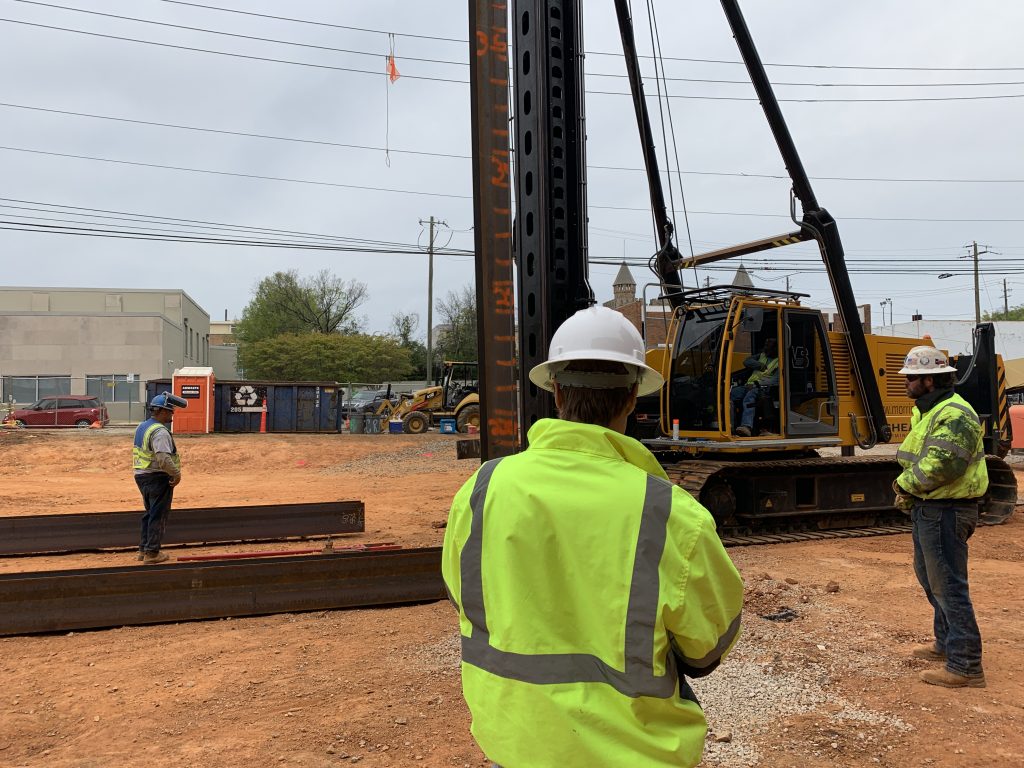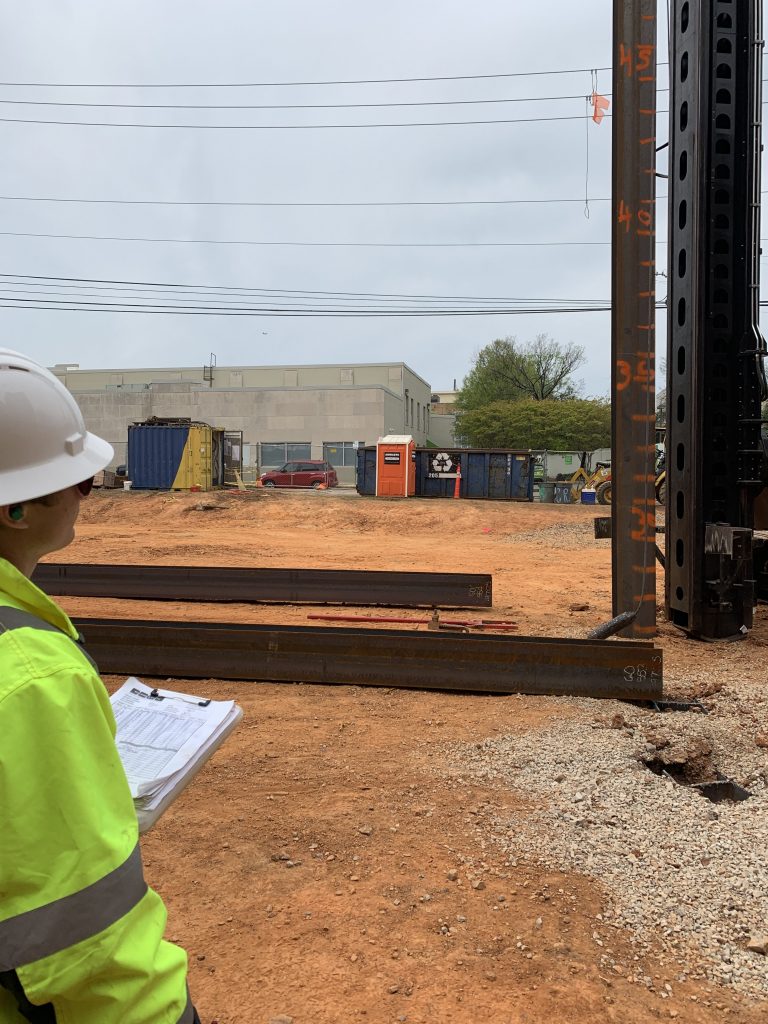
Have you ever wondered what we do day in and day out on our jobsites? We’d love to tell you about it! Building & Earth provides a full range of services to our clients, including geotechnical engineering services, construction materials testing (CMT), Special Inspections per IBC and environmental consulting.
Some of the specialized studies include seismic site classification utilizing the Refraction Microtremor device (RE-Mi), non-invasive studies using StructureScan and UtilityScan Ground Penetrating Radar (GPR), thermal imaging studies using the FLIR thermal image camera and floor flatness profiling with the FACE Dipstick devices.
We’ll be breaking down some of the services we provide and how we do it on our blog. First up: Pile Driving Analyzer (PDA) tests. Read more below.
What is pile?
If you’ve been around a construction site, you are probably familiar with what a pile is, but just in case, here’s a refresher. A pile is a long structural element (usually concrete, steel or wood) that is used as a support for structures that will be built on top of it.
Piles are often used when the soil at the surface of a construction site is weak and cannot support the weight of the structure that will be built on top of it. Piles are driven into the ground to carry the weight of the building that can’t be supported by that first layer of soil. The other common situation where piles are used for support of structures that will have heavy, concentrated weight in certain places. These structures include water towers or tanks, bridges, high-rise buildings, and more.
The support for the piles is normally developed from skin friction, end bearing, or a combination of the two. These support mechanisms are characterized as follows:
- Skin Friction—The load on the pile is supported across the entire surface of the pile by using friction.
- End-bearing—As the name would suggest, end-bearing piles transfer the weight of the load onto a layer of strong soil or rock below the end of the foundation.
How do we determine the need for piles?
We start by performing a geotechnical site assessment using soil test borings, rock coring and geophysical methods, such as seismic refraction. When our site assessment shows that the existing site soils cannot support the structure loads on the near surface soils, we evaluate the potential for supporting the structure on piling.
Based on the conditions we encounter in our geotechnical site assessment, we then provide estimates for the load carrying capacities of the recommended piles. The estimation of the pile support capacity can be very complicated due to the variability of the soils encountered on site.
When the construction begins, it is necessary to verify that the recommended pile capacity exists. The capacity verification is normally done with static load tests performed on one or more test piles. The biggest drawbacks to the performance of static load tests are the cost and the very limited amount of information that they generate.
A static load test normally verifies the estimated pile capacity at a single location, but it does not provide the ultimate pile capacity or the individual support capacities attributable to skin friction or end bearing. As an alternative to, or in conjunction with, static load testing, we have equipment that can determine the ultimate pile capacity and details of the support mechanism for driven piles. The equipment is called a Pile Driving Analyzer (PDA).
What is the Pile Driving Analyzer system?
PDA tests, also known as high-strain dynamic load tests, can be used to determine the load-bearing capability of the piles installed for any given structure. PDA tests are also helpful in evaluating the shaft integrity of the pile, and measuring the stresses generated in the pile during driving. This gives assurance that the pile driving equipment is not damaging the piles during driving.
The PDA test is performed on driven piles at the time of driving. Instrumentation is installed near the top of the pile that allows us to measure the stresses in the pile as well as the pile movement. The information that is collected is evaluated to determine the ultimate pile capacity, the portion of the capacity attributable to skin friction, the location of the frictional resistance, and the portion of the capacity attributable to end bearing.
What Is the advantage of PDA testing?
The PDA test generates significantly more information than Static Load Tests, but at a fraction of the cost. This allows us to perform several tests across the project site and based on the results, potential modify the structural design to lower the cost of the structure foundations. Using PDA testing, we have been able to justify very high pile capacities that has resulted in the elimination of hundreds of piles on a single project.
What do the tests do?
The main goal of performing PDA tests is to provide accurate determination of the capacity of driven piles to help our clients get the most efficient foundation system. Two prominent projects on which Building & Earth has performed PDA tests include the AC Marriott Hotel in Huntsville, Alabama, and the Vesta Apartments, a 17-story residential tower we are currently working on in Birmingham, Alabama.
Stay tuned for new blog posts explaining some of our other services. Interested in discussing how we could help you on your next project? Give us a call at 1-800-775-2468 or fill out our user-friendly Request a Proposal form. We look forward to working with you!


